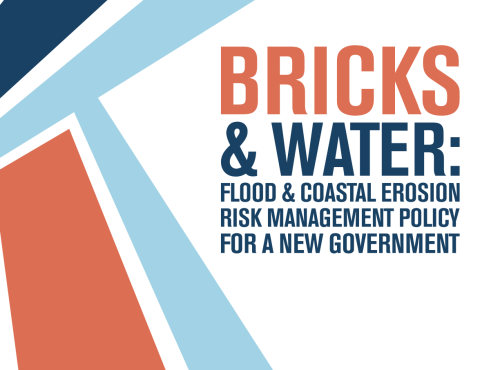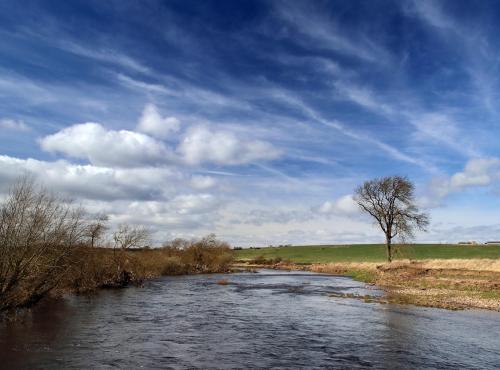Are the Government’s housing ambitions protecting people from flooding and drought?
“Housing has become a pressing issue - we haven’t built enough houses in this country for a long time. Whilst we need to build more homes, we also must manage water sustainably and efficiently on a catchment-scale. Water is a precious resource and we must use it wisely.”
Said Labour Member of Parliament Angela Smith MP and Conservative Peer Baroness Anne McIntosh of Pickering, who will be co-chairing a new inquiry into housing and water.
This chronic housing shortage has been acknowledged by the Government. Sajid Javid MP, Secretary of State for Communities and Local Government said recently that between 275,000 and 300,000 homes a year were needed in England alone. Even the PM has weighed in on how to fix “Britain’s broken housing market” by challenging developers to build more homes, and recently pledged £2bn to increase the supply of affordable housing.
This new housing that is built now will likely to be around for decades to come, so how can it be resilient to future challenges?
The Westminster Sustainable Business Forum (WSBF) is therefore launching an inquiry to evaluate how water and housing policy is currently being implemented in England, and will look to set out an ambitious strategic plan for building sustainably and managing water effectively.
Policy Connect is a cross-party think tank which operates the WSBF, and has over twenty years’ experience in providing independent research. Policy Connect seeks to better inform public debate, and so improve policy for the benefit of society.
The UK is in the midst of a housing crisis – but what are hardly mentioned are the water management pressures that run in tandem. England is thought of as a country with unseasonably damp weather. We think of water as a plentiful resource and its management need not overly concern us. This is the reason why water management has not always enjoyed political scrutiny in the past.
Then the floods came. 2007, 2008, 2009, 2012 and 2014 all saw near-record levels of rainfall in powerful storms that caused billions of pounds of damages to the economy, and destroyed homes and livelihoods.
There are also growing concerns over water shortages. England is in the lower-quartile globally of the available water resource per capita, and as recently as May 2017 we were technically in drought conditions after six relatively dry years. The 2012 London Olympics were almost scuppered by severe water shortages, only to be saved by one of the wettest summers on record.
Water stress will not only be a problem for the South East of England. The Committee on Climate Change has recently stated that by the mid-Century, water shortages could affect every region of England, even the famously wet North West. The UK hasn’t witnessed a severe drought since the summer of 1995 in Yorkshire, and before that it was the scorching heatwave of 1976 which caused widespread drought. We may be due another soon.
Is climate change to blame? During the past few decades, the UK has seen increases in several indicators of high temperature extremes and heavy rainfall events. Land temperature has increased by 0.9°C in the past 50 years, and up to 10% increases in annual rainfall have been observed.
The UK Met Office says, “The UK's summer rainfall is decreasing on average, while winter rainfall is increasing. There is also evidence that heavy rainfall events have become more intensive.”
Longer, dryer periods, and short sharper wet periods could be the new normal by 2050. In the future, rain will fall on hard, dry ground and quickly run out to sea before soaking slowly into the soil and replenishing underground aquifers.
Aside from the effects of climate change on precipitation, other pressure points include increased water demand from higher temperatures and population growth. The UK’s population is projected to reach more than 75 million by 2050.
At the same time, there is a housing crisis in the UK. Between 1971 and 1994 housing stock in the UK rose by 4.9 million, while population in the UK rose by 1.9 million; conversely, between 1994 and 2014, housing stock rose by 3.9 million, while the population rose by 6.7 million (NIC).
Just to keep up with demand we may need 300,000 new homes every year – a level of building not seen since the 1970s. The Conservative Government has committed in their Housing Whitepaper to building 1.5 million new homes by 2022. The next question is: where do we build these new houses, and how?
Baroness McIntosh and Angela Smith MP commented:
“That is why we are co-chairing this Westminster Sustainable Business Forum Inquiry into water and housing, to offer a strategic plan to government for building the flood-resilient and water-efficient communities of the future.”




